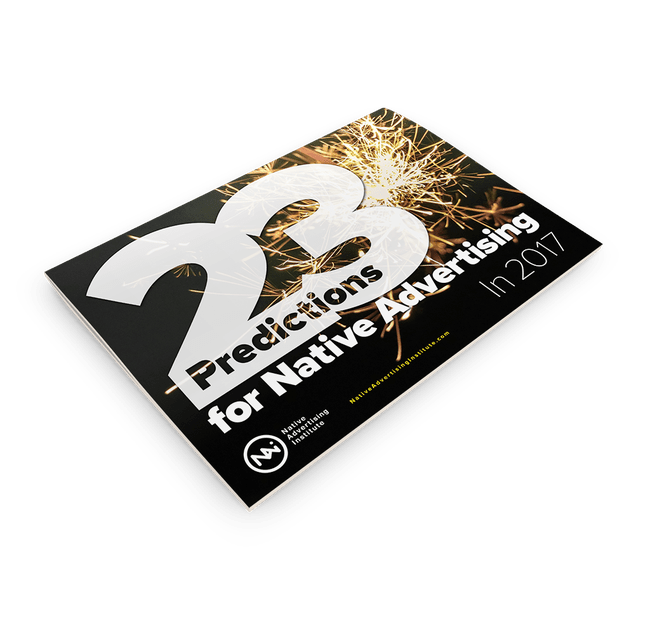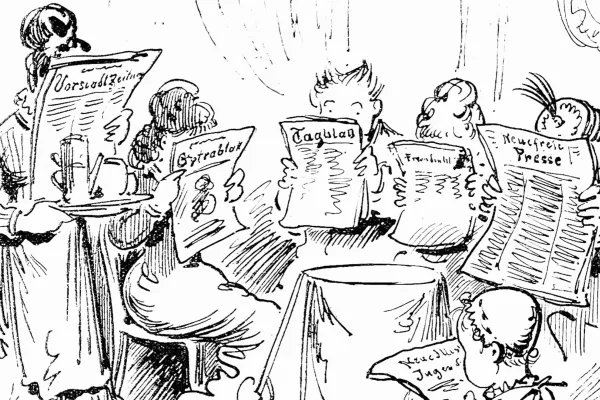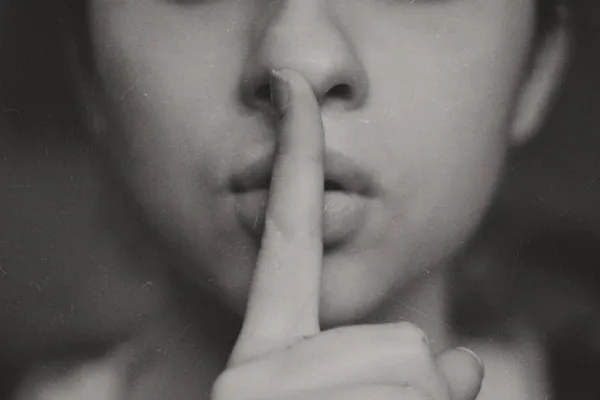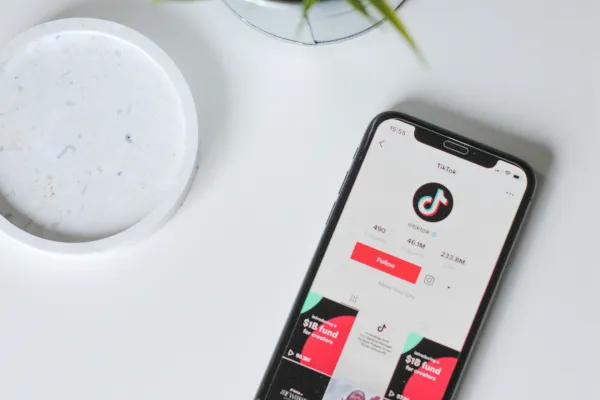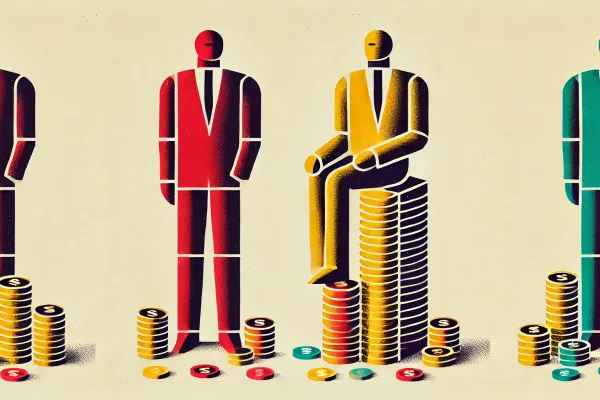 Details
Details
How do you convince advertisers to tell real stories for native advertising? How much branding is too much branding? What does mobile mean for storytelling in native advertising?
We asked Melanie Deziel, Branded Content Consultant and Founder of the Overlap League, about her rule for creating great native advertising, when she was a speaker at Native Advertising DAYS 2016. Sign up for notifications about this year's conference here.
Melanie Deziel is an award-winning content strategist who was the first Editor of Branded Content at The New York Times, where she conceived of and wrote in-depth pieces sponsored by advertisers, including the “Women Inmates” piece created in partnership with Netflix for 'Orange Is The New Black'.
Below are highlights from the interview which have been slightly edited for clarity.
The first step of a native campaign: Know your advertiser's goal
"The first thing you have to think about if you're a publisher trying to come up with a content idea is; what is the goal? What does the advertiser actually want to accomplish? Because in some cases it's awareness, in other cases it's engagement and sometimes it's conversion. Sometimes they're trying to get earned media coverage so knowing that up front really gives you a good place to start.
Knowing the advertiser's objective right up front is very important
If you know that, you know the kinds of content you should be trying to create and trying to come up with. The biggest problem you can have is to create a fantastic piece of content that doesn't accomplish your advertiser's goal. So knowing the objective right up front is very important."
Find out what native advertising means to you
"To me, native advertising is any form of advertising that organically fits into the environment and the context where it's presented. What's amazing about that is, that it's different for every single publisher.
So if you're a content creator at the New York Times then what's native for you is in-depth fact-based reporting. If you're a content creator at BuzzFeed then what's native for you is socially optimized very visual, humorous content. If you're Spotify or Pandora then what's native for you is a sponsored playlist."
Tips for knowing your consumers
"Finding out what your consumers are actually interested in has never been easier. With all the data that we have digitally, you can find the answers to that in so many different places.
Look to your social channels to see what are people sharing and liking most often. They're probably saying right in the comments what they're actually curious about, what they want to know more about or what they're sick of hearing about.
Google autocomplete can be a really great insight for you
You can also look to things like your website data to find out what pages or sections or topics they're looking at. Look to your frequently asked questions to see what challenges they may still have.
And even just look to Google for auto-complete; start typing in some basic facts about your product and see what questions people have. That can be a really great insight for you to know where those gaps are in their knowledge that you can create content to help fill."
Branding: The fine line between too much or too little
"There's a fine line between just enough branding and too much branding and the tough thing is that there's really no clear answer on when it's one or the other.
We know what feels good and what doesn't, what seems comfortable and what seems like over-the-top. But there's no hard line that says; if the logo is over 22 pixels that's too much. We don't have those same constraints that you have with typical digital ad placements. It's definitely a judgment call and everyone's judgment is different. What looks over kill on one publisher's website might barely tip your radar on another one.
What good does the native ad do for a brand if their branding is not clear and present?
We're in the lucky, if not maybe a little unfortunate, position that it's a two-way conversation with our readers now. So they will certainly let you know when you've gone too far and that's a good signal that you should start scaling back or thinking of other ways to do branding.
On the other end of the spectrum, you want to make sure that that branding is also clear because the last thing you want to do is trick anyone or deceive anyone. And what good does the native ad do for a brand if their branding is not clear and present?"
Convince advertisers to tell real stories
"Advertisers are really comfortable talking about themselves. That's what they're used to doing on all their standard placements, on billboards and in magazines but they're not so comfortable telling stories in many cases.
So they rely on us on the publishing side to help them figure out what those stories are. I think the easiest way to get an advertiser on board with telling a story is to find a story that inspires them, find a story that touches their heart in the way that they know it will touch their consumer's heart.
RELATED: Melanie Deziel: I've Seen Advertisers Struggle to Tell Real Stories
What's scary about the storytelling is that it's not familiar, so the more you can help the advertisers see the stories that are within their own walls, the more comfortable they'll become with less branded stories because they'll start to see the value of the story itself and not just the value of a story that achieves an advertising goal."
The story is the key to a successful native campaign
"It's so so important to start with the story and then figure out what format is the best way to tell it. A lot of times we end up in a brainstorm where you say, "OK we need three video ideas" and what you end up with is videos that aren't very exciting because you're forcing something into a format where it doesn't belong.
Start by figuring out what that story is?
The best thing to do is just to start by figuring out what that story is? What are we actually going to talk about? How are we going to entertain our consumers? How are we going to help them? What are we going to teach them?
RELATED: The Psychology Behind Stories
And then ask yourself what's the best way to accomplish that? Is it through video or is it through an infographic or is it through VR? Is it you know an interactive experience? Is it something else entirely like a course or a movie?
There could be a lot of different answers to that question but if you start with the format and then try to force the story into it, a lot of times that's clear to your consumers. And if it's clear to consumers they're not going to engage with it in the way that your advertiser is hoping."
Budgets and legal issues are the two biggest challenges
"One of the big challenges, when you're trying to come up with the biggest, best content idea that will impress your advertiser and win the business, is the realization that you don't have the budget or the time to create this wonderful magnificent thing that you've come up with.
It's really disheartening particularly for a creative first or a creative heavy team to realize that the big idea may not fit within the constraints. So it's important to think about different ways that you can scale that idea back or scale other parts of your media plan back to still accomplish the biggest and best idea you can within the time and the budget that you have.
Can you name drop a celebrity who may or may not have used your product?
Another big challenge that comes up when you're brainstorming native ideas is the reality of the legal situation. There are different laws in every country that pertain to you; can you mention a copyrighted brand? Can you name drop of a celebrity who may or may not have used your product? Can you talk about a certain landmark that you might not even know is trademarked? Can you have a certain building in the background?
RELATED: Legal Issues to Look Out for with Influencers in Native Advertising
It's really important to have an open dialogue with your legal team and the legal team of the brand as well to make sure that all these ideas are actually feasible and not going to get you in hot water with the various governing bodies in your area. No one wants content that has to be taken down for breaking some sort of legal rule.
Sit down with your legal team, make them a part of your process so that you can really work together as a team. It shouldn't be this sort of veto power where they come in at the last minute and squash your dreams. That's not what they want to do and that's not what you want to happen."
When your budget gets slashed -- get creative
"So if you have come up with this great idea and then your budget gets slashed and you're being asked to come up with the same level of creativity that's certainly a challenge.
I think sometimes the best thing to do is not to start over but to think of, "Well what's the one-third price version of this?" So if you had pitched a four part video series well maybe it's only one video now. You can still tell a really compelling story with one video.
Or you pitch this interactive data visualization well maybe now it's just an infographic but you can still make a really great infographic. I think as creators it's really hard to let go of the ideal thing that we came up with and create what we see as a lesser version of the initial idea.
Our audience doesn't care what the initial budget was
But our audience doesn't know what the initial budget was and our audience doesn't care what the initial budget was. Our audience is just looking for quality content that helps them in some way or is of some use to them. So as long as you can still create that you're still going to be OK.
So you just have to put those creative instincts to be disappointed on hold and really think about what you can still deliver to your audience."
Extend the life of your native advertising campaigns
"Many times when we create these native campaigns it's disappointing to think that after a month or three weeks or whatever the case may be it will just come to an end and perhaps be taken off the website as is the policy for some publishers.
There's a lot of other ways that you can still give that content life after the campaign is over. It might mean putting more into your distribution budget, maybe some more social promotion at a later date when something comes up in the news and makes it relevant again. It could also mean putting it on the brand's website.
When I was at the New York Times' T Brand Studio several times we had advertisers who would ask for permission once the campaign had ended to house the content on their own site. An example would be Cole Haan and we created a piece called 'Grit and Grace', which was about the New York City Ballet.
RELATED: The 7 Steps to Creating Evergreen Content
Once the campaign was over they took the videos from that interactive storytelling page that we created and repurposed the videos to house them on their website so you could view that content there. And it had a whole new life to it.
It made perfect sense to give that content a second life on the brand's own site
Goldman Sachs did a similar thing with T Brand Studio where we created an interactive guide to the capital markets and how all of that works. Very complicated issues that the average person doesn't understand or perhaps isn't interested in understanding. But for the Goldman Sach's audience, that's information they need to know.
So it was really valuable for them to put that in a tab on their website where their employees, as well as their customers, could go there and learn more. That was very in line with what Goldman Sachs was doing on their website already, so it made perfect sense to give that content a second life on the brand's own site."
Native advertising can reach scale
"I think our instinct is to kind of go toward the usual ways of getting traffic to our content. We think about native units on the site or display ads, we probably are running some sort of promotion on social media but there are a lot of other options that may make sense for the campaign too.
Think about what email lists and newsletters may be at your disposal. As a publisher that gives you an opportunity to sell placements in your email newsletters. On the brand side they probably have multiple email list that they're reaching out to different audience segments with. Those people have self-selected to be interested in with that brand has to say.
RELATED: Why Native Will Win As Paid Distribution Channel
Same thing goes for the brand's website and social channels. So that's almost a free resource to be able to put the content out through and there's plenty of other options that don't come right to mind like thinking about the print resources that are available.
Print is still the core for so many publishers, so finding a way to either put a print call to action to go online and view the digital experience or making a print version, a static version, that can live in print to still bring some value right there on the page for your print readers is another great thing to do.
There may be a niche community that is the perfect place for your content
There may also be other niche websites and communities that aren't part of the big ones; Twitter, Facebook, LinkedIn, YouTube and some of the others that come right to mind. But a niche community that is the perfect place for your content about pets or about books or about something else.
That could be a great way to reach more consumers, so think about where your audience is living and how can you make sure your content is there for them to discover."
Don't do mobile-friendly -- do mobile-first
"In the last few years a lot of publishers have seen on the editorial side that now more than 50 percent of their traffic is coming from mobile, so a lot of them realize they can no longer just create mobile friendly content. They really have to create their content mobile-first.
RELATED: 4 Indispensable Tactics for Mobile Native Advertising
That shift is happening on the native side as well, so think about ways that that content can be responsive no matter the screen size. And think about the technical requirements to make sure that this is going to display on Apple and on Android or in different operating systems.
Bake some cookies for your tech team and make sure that they're ready to be a part of the team too
It's never been more important to make sure your tech team is in your corner helping to make sure your content work. So bake some cookies for your tech team and make sure that they're ready to be a part of the team too."
"Good content still intrigues us"
"We're in a tough environment for media right now where the trend seems to be going toward snackable and quick and social and everyone wants to know about viral and how fast can it be read. But the reality is that good content still intrigues us.
We still want to read in-depth stories. Books still sell whether they're in print or digitally. People still pay for a ticket to sit in a two-hour movie. So it's not that our attention span is gone. It's just that we've shifted the way we apply it. We're very selective about what we're willing to give that much attention.
RELATED: 13 Mistakes Content Creators Make When They Do Native for a Young Audience
So if you want to capture your audience's attention for more than the average minute or so that they might spend with an article, if you're going for that long form environment; make sure that the stuff you're creating is top notch because you don't just have to beat out another article, you've got to beat out Facebook, their music player etc. for their attention, so the bar has never been higher.
Brands challenge publishers when it comes to storytelling
"Brands have been telling their own stories for a very long time. What we're seeing differently is that they've never had more tools to tell those stories and it's never been easier for them to do it.
When you look at something like the Lego movie they're getting us to pay for tickets to their branded content. So it can definitely be done well. I think the marketplace will keep us honest because the only things we're willing to engage with, share and praise is going to be the good stuff.
RELATED: Rebecca Lieb: “Advertisers and Brands Need to Adapt to the New Reality”
If a brand is going to go all in and create a Brand Studio and try to create New York Times quality work or BuzzFeed quality work, then those brands really have to make sure they keep their best practices in line and create the content with intention and authenticity.
Brands who invest and who do it right are going to be able to create much deeper relationships with their audience
Countless brands have a brand blog where they just talk about updates within the company and it's not the most fascinating reading material. But you have sort of an allegiance to the sneakers brand that you love, or the computer that you use or the brand of coffee you drink, so if the content they're creating is good why wouldn't you rush to go read that?
Those brands who invest and who do it right are going to be able to create much deeper relationships with their audience."
Plenty of brands will still need publishers' storytelling expertise
"I don't know if Brand Content Studios will be a threat to Publisher Content Studios. What we may see is a bit of separation in who they serve.
Certainly, the main appeal of a Publisher Content Studio right now is we can give you that storytelling expertise, we can give you the tools and give you the audience to be able to create and distribute the content.
No matter who your pay check is coming from, it's an opportunity for a storyteller to tell truly great stories
I don't know that Starbucks necessarily needs a publisher to reach a wide audience. They've got that in many different ways. Same can be said for Red Bull. There are a lot of brands that have their own audience and if they have the budget they can hire their own storytellers.
RELATED: How Native Advertising Can Help Extend Your Brand
But it won't be the vast majority of them. There will still be plenty of brands that need that expertise and guidance to create something that people actually want to engage with. So I think publishers are safe.
I'm not hoping for the brands to fail just to protect the idea of Publishers' Branded Content Studios because the important thing is no matter who your pay check is coming from, whether it's The Wall Street Journal or Lincoln Financial, that's going to be an opportunity for a storyteller to tell truly great stories. And then I think we're all still winning."
Melanie Deziel is a featured expert in ’23 Predictions for Native Advertising in 2017′ [FREE E-BOOK]
